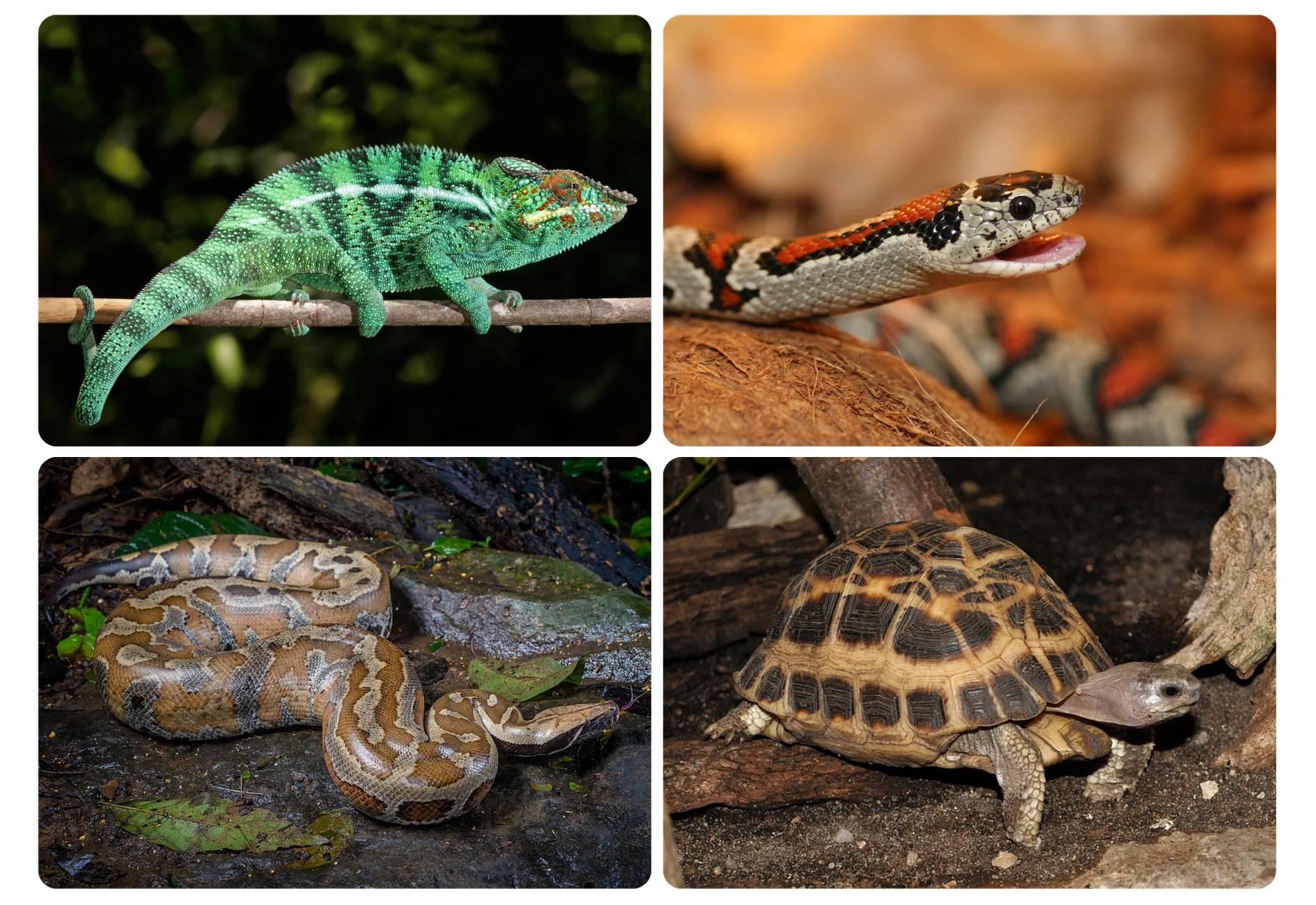United States influences Australia's illegal pet trade

Species at high risk of illegal trade L to R (top) F. pardalis (photo by Charles J.Sharp); L. mexicana (photo by PetrBrož); L to R (bottom) P. brongersmai (photo by Tontan Travel); and P. arachnoides (photo by Klaus Rudloff).
University of Adelaide scientists have found the popularity of certain wildlife species in the USA predicts the patterns of illegal importations into Australia.
When it comes to importing illegal reptiles, Australia’s trade closely follows US trends, according to an analysis published in Conversation Letters.
A team of researchers from the University of Adelaide and University of Aberdeen, UK, compared 75 species of live reptiles illegally smuggled into Australia in the last two decades. They found that the majority had been recently popular in the US, and international, pet markets.
Using modelling, the team found that the popularity of a species in the US or internationally was a key predictor whether it would likely be smuggled into Australia – potentially important information for biosecurity personnel to help regulate the illegal trade.
Australia has strict laws about wildlife trading to protect the wellbeing of animals and decrease health and biosecurity risks. While the importation of all non-native reptiles as pets is banned, it is unclear how commonly smuggling occurs. However, trade in many of these reptiles is not banned in the US; little was known about whether this might influence illegal imports into Australia.
“I had looked at the reptile trade in the United States for my PhD, and noticed something interesting [in the data],” says Dr Oliver Stringham from the School of Biological Sciences, who led the study.
“A lot of species were very common in the US trade, where they’re completely legal because the US trade is unregulated. We wondered if there was any association here in Australia.
“We found a pattern in the data: species that are more popular in the US are more likely to be smuggled to Australia.”
The analysis showed that there was, on average, a lag of about 5-6 years between when the smuggled reptiles had first appeared in the US and when they arrived in Australia, which means biosecurity personnel can be informed about when to expect to see specific species make it to Australia.
The results provide insights into drivers of the illegal wildlife trade in Australia, which will inform how biosecurity is managed.
“Often we find situations where enforcement agencies, through no fault of their own, just can’t identify species,” says Associate Professor Phill Cassey of the University of Adelaide.
“We compared the records of species seized in Australia with their popularity in pet and reptile-keeping in the US, and large internet markets, and used those to predict the species that are most likely to be in the next wave of desirable species so biosecurity agencies can be on alert for them coming into Australia.
“By providing agencies with the types, characteristics and information about the species that are predicted to be in the next wave of potential imports, they’ve got something to test their systems against.”
Research into trends in the illegal reptile trade in Australia is tricky because the importation of all non-native reptiles as pets is banned, meaning there are no pet registries. This means the records about ownership are predominantly gained from biosecurity seizures. More research is required to learn the extent of trade in Australia.
“In Australia we have a very incomplete picture of the extent of the illegal reptile trade,” says Dr Cassey.
“What we have put together is a 20-year record of seizures of exotic and alien species in Australia, so we’ve got an idea of the sort of range and identity of species that have been seized.”
While the results showed a distinct correlation between popular species in the US and smuggling trends into Australia, they don’t show the causes of this.
“We don’t really know the reasons behind these patterns where there are correlations. We could speculate, though,” says Dr Stringham.
“One of [the speculations] is that the US largely has an unregulated trade in reptiles, at least, where they’re importing species from around the globe – that’s usually when species popularity skyrockets because there’s the supplier brand.
“If people in Australia see that on social media and other places, [they may want] popular species like a ball python or a leopard gecko.
"But we need to figure out the causal reasons by specifically interviewing people, both smugglers and potential buyers here in Australia, trying to figure out why they want certain species.
"We can then try to develop some interventions or policies around that.”
Sciences research in focus
- US’s influence on Australia’s illegal pet trade - Uni of Adelaide News Room
- Live reptile smuggling is predicted by trends in the legal exotic pet trade - Conservation Letters
- The original article was written by Deborah Devis for Cosmos Magazine and is republished with permission.
